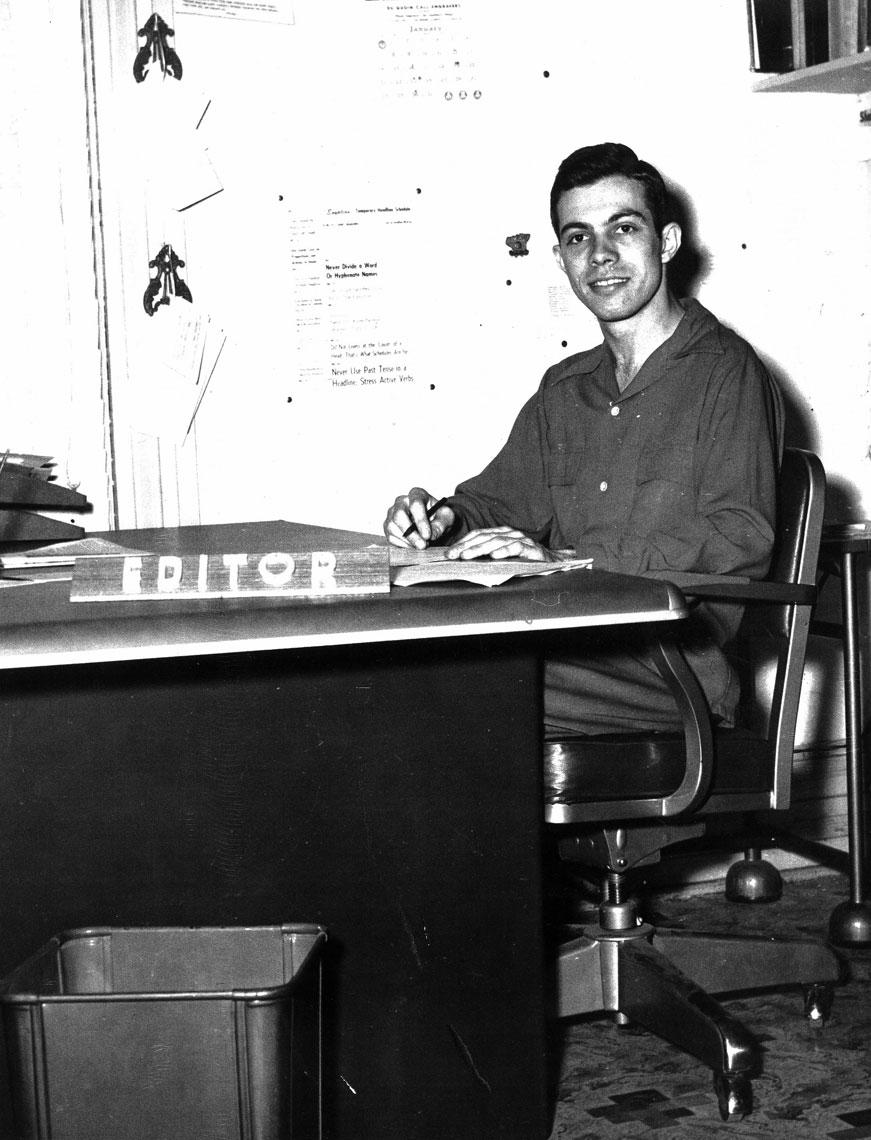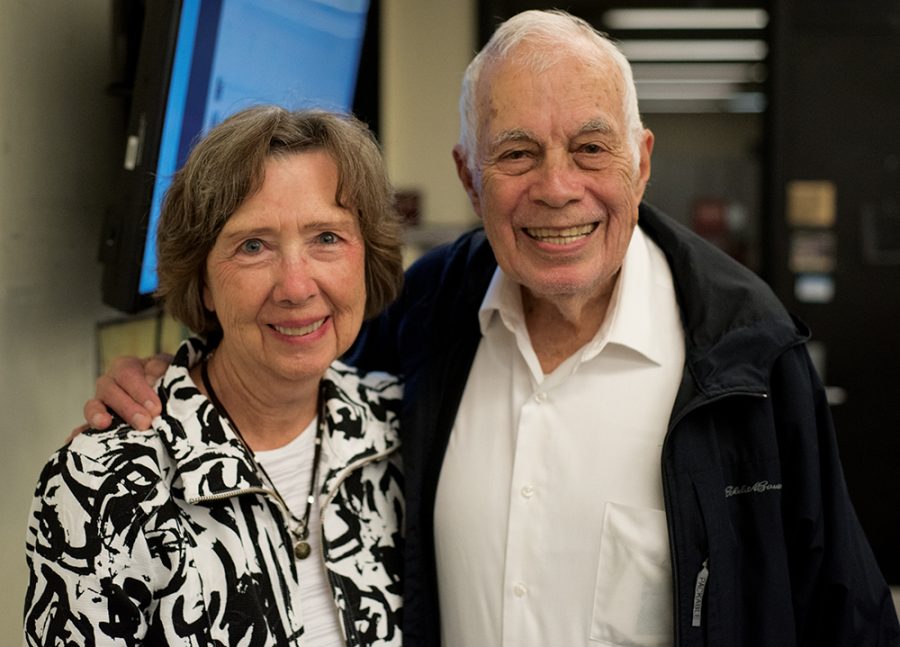Decades later, former DE editor remembers his influence on Carbondale’s black community
Former Editor-in-Chief Bill Hollada and his wife, Roberta Hollada, pose Friday, Oct. 21, 2016, during a newsroom tour in celebration of the Daily Egyptian’s 100-year anniversary. (Morgan Timms | @Morgan_Timms)
October 26, 2016
It is the goal of most journalists to spark change in their community, and that’s exactly what Bill Hollada did.
Hollada entered the Daily Egyptian newsroom in 1947 and eventually became the managing editor before ultimately becoming the paper’s editor-in-chief.
“We wanted to have a newspaper that had some input and that would bring about some changes,” Hollada said.
Advertisement
And he brought those changes — in fact, they were arguably some of the most prolific changes in Carbondale at the time.
Hollada said many students and faculty on campus in 1950 were accepting of African Americans, but SIU was home to several black students whose voices he believed should be heard.
Upon becoming editor-in-chief, Hollada brought on a black columnist to write for what was then called The Egyptian about racial issues. The Daily Egyptian could not confirm the writer’s name as of Monday.
Alongside Hollada, that writer helped desegregate Carbondale.

In October 1950, Arkansas State University requested that SIU sit its black players out of a scheduled football match.
Soon after, Hollada wrote an editorial urging the university to enact a drop card against Arkansas State, which would ban them from any further games against SIU for a number of years.
The first few lines of his editorial read: “All Southern players whose last names begin with ‘S’ will not be allowed to play in the grid game Saturday. Suppose one of Southern’s opponents were to send the above message to Southern’s athletic department. Certainly, a howl would be raised…”
Advertisement*
Two weeks later, SIU announced it was handing Arkansas State a drop card. The university was banned until 1957, according to a Daily Egyptian anniversary book published this month called The Daily Egyptian: The First Century.
“This was 1950,” Eric Fidler, the paper’s current faculty adviser, said Friday at a celebration of the news outlet’s centennial anniversary. “He was pretty far ahead of his time, I think. That’s really remarkable.”
Of all the alumni present, Hollada’s time with the paper stretched back further than any of the former staff at the weekend’s celebrations — 69 years.
Despite praise nearly seven decades later, Hollada and the The Egyptian were not without opposition when he published the editorial. Some faculty and students accused his staff of writing about problems that they did not believe existed.
“But we thought we were writing problems and stories that did exist,” said Hollada, who’s wife, Roberta, jokingly refered to him as a “rabble-rouser.”
As Hollada returned to SIU for the paper’s 100th anniversary, he stepped into a newsroom he had not seen for 15 years — a newsroom much different from the house used as the organization’s headquarters during his time as a student.
“It’s great,” Hollada said about being back. “It’s a little bit bigger than what we had in the 1950s.”
https://www.youtube.com/watch?v=biWlcTibkjI
During the celebration, Hollada was honored by being officially inducted in the newspaper’s Hall of Fame.
Bill Recktenwald, a senior lecturer and journalist-in-residence in SIU’s School of Journalism, was the man who nominated Hollada for the award. Recktenwald said the former editor deserves the award for his actions against racial injustice as well as eliminating alcohol and cigarette ads from the paper.
“It’s one of the best examples of journalistic excellence — taking on something like that,” Recktenwald said.
Cory Ray can be reached at [email protected], on Twitter @coryray_DE or at 618-536-3326.
To stay up to date with all your SIU news, follow the Daily Egyptian on Facebook and Twitter.
Advertisement










James McKinley • Oct 27, 2016 at 7:36 pm
I’m not sure which Carbondale Bill Hollada desegregated, but SIUC housing in Carbondale, IL, was not the place. I started SIU in 1951. There were no Black students living in campus housing except student athletes, and the community south of Main St and west of Wall Streets were void of Black students. Black female students first moved into Woody hall around 1956/57 and male students were able to move into the barracks during that same time. The majority of housing for Black students was only available from families on the Northeast side of town. Restaurants, the movie theaters, clubs, and churches were not integrated during the period 1950-1956. There were also teachers on campus that Black students were advised to avoid because of their anti-black attitudes. Unfortunately most of those teachers were in core courses that all freshmen-sophomore students had to take. Of course these were exceptions and a few students did live in areas near campus but they were few and usually in either athletics or a specialty area that had a mentor who provided special treatment for them. I left SIU in 12/1953 and returned Fall 1957 until graduation 6/1960.